ARTICLE: While the subject of contextual branding against other company’s trademarks will not be a new issue to some people, and I had been aware of the problem from the past couple of years of litigation between major companies and search portals like Google and Yahoo!, nevertheless I was a bit surprised when my brand was targeted by an upstart competitor.
Pay per click (PPC), and pay for position (PFP), advertising was pioneered by the folks at Goto.com (which became Overture, now part of Yahoo!), then picked up as a good idea in different flavors by companies like Findwhat.com (disclosure: I was on the FW launch team), Google, and MSN. It’s a great concept, type in a search for tennis shoes and you might find an ad for my favorite online shoe store Eastbay.com, or type in computer parts and you might find a popular PC parts vendor Newegg.com.
That’s great for advertisers, and great for online shops and sellers. It is called “contextual advertising,” where ads which are related (in context) to what somebody is viewing, are shown. Makes total sense. If you’re doing a search about guitars, why shouldn’t you see advertisements about guitar shops and online music stores?
 Where this process gets a bit contentious, and in some cases downright ugly, is when you type in a search for a major brand, or even a registered trademark, and competitors can bid to buy a spot higher than you, under your own brand. Imagine looking in the white pages of your phone book and right above the listing for Pizza Hut (alphabetically), there would be a boxed add for Domino’s Pizza. Might this not cause confusion, or be some kind of unfair competition?
Where this process gets a bit contentious, and in some cases downright ugly, is when you type in a search for a major brand, or even a registered trademark, and competitors can bid to buy a spot higher than you, under your own brand. Imagine looking in the white pages of your phone book and right above the listing for Pizza Hut (alphabetically), there would be a boxed add for Domino’s Pizza. Might this not cause confusion, or be some kind of unfair competition?
You might think so. However did you pay for that white page listing? No. Similarly you and I are not paying Google to list our site in their directory (arguably if you’re paying Yahoo! to be listed this could be treated differently, as we’ll see later). So, in effect, Google’s builders believe that they can do anything with what is in their system and your trademark, brand, personal name, or product, is fair game to any advertiser.
Well, isn’t that free enterprise? Sure. But what got my nipple nuts in a twist was the placement of Google’s AdWords advertising and Yahoo! ads within other sites’ content under my registered trademark — my brand which I’ve spent seven hard years building into a respected entity in the PR business.
Mixed Messages in Advertising Placement
For instance, not long ago I happened to be looking on Technorati for my site’s submitted content under our brand, Send2Press�, and I was a bit surprised to see an advertisement for some newbie upstart in my industry called Mass Media Distribution with an ad right above my content listings, and then again in the middle halfway down the page. I thought… “W.T.F.” then said it aloud for personal emphasis to mine own ears.
I contacted Technorati, and was told they couldn’t do anything about it since it was Yahoo! ads being served based on the keyword or searched term. (Note: coincidentally, about a month after my complaint, Technorati changed their page layout, and the contextual ads don’t sit within content listings for tag searches, but do still sit atop results for “in blog posts” results. Oddly, when I checked today, they have now switched to Google ads in place of Yahoo! results.)
So, I trundled (virtually of course) off to Yahoo! and tracked down the page on their website to issue a complaint about unfair use of my precious U.S. registered trademark. Yes, steam was coming out of my ears, but admittedly, partly because I’d been caught with my pants down by somebody who found a loophole in non-traditional advertising and was trying to put their brand name front and center in front of my clients and audience. All I could think though, was “Damn dirty apes!” and let my fingers stab at the keyboard while hunting down where Yahoo! hides such information in their advertising system.
First thing to do was go place a bid in Yahoo!’s ad system, and suffer the indignity of having to outbid some upstart company for my own trademarked brand. Done. Then I went again in search of the page on Yahoo! to address this. Luckily, since Yahoo! does offer paid inclusion in their search, they do have to respond to this kind of issue since it’s arguably a conflict of interest to sell inclusion, and then let somebody bid on an advert that will run above your listing in their search engine. Or, at least that was my thinking, which could be blind hope on my part as to what’s right and what’s wrong in this mixed-up world of online advertising.
So, I was unable to locate the trademark page, but I did put in a query with their information request form, and they sent me back a personal response and link to the trademark page: “Thank you for bringing this matter to our attention. So that we may properly investigate this issue, please go to the appropriate page on our Web site, as outlined below and provide some additional information: http://searchmarketing.yahoo.com/legal/trademarks.php. Once there, please review our trademark policy and provide us with the information. Please send the information directly to the e-mail address given on the Trademark Information page: trademarkconcern-ysm @yahoo-inc.com.”
One minor amusing point is that all of the emails back from Yahoo! on this matter all came from the Overture mail system. Hasn’t it been a couple of years since Yahoo! switched Overture’s brand out of the mix?
I was pleasantly surprised to find that three days after sending in my concerns and proof of the problem, my trademark status with the US PTO, and heartfelt ramblings, I got this letter back from Yahoo’s support:
Dear Chris:
Thank you for your correspondence. This email will serve as our response, you will not receive further notification from us.Yahoo! Search Marketing does not approve of or condone websites that infringe trademarks. However, we generally have no control over the content presented by the advertisers who list their websites on our search engine. Yahoo! Search Marketing does require that each website be relevant under our guidelines. To summarize, we allow advertisers to bid on a search term that may be the trademark of another party so long as their listing meets one of the following conditions:
1. Reseller: The advertisers site must sell (or clearly facilitate the sale of) the product or service bearing the trademark (for example, an online shoe store that sells Nike shoes on their landing page would be allowed to bid on the search term nike).
2. Information Site, Not Competitive: The primary purpose of the advertisers site is to provide substantial information about the trademark owner or products or services bearing the trademark, AND the advertisers site does not sell or promote a product or service that competes with the trademark owners products or services (for example, a site that provides product reviews may bid on the brand names of the products being reviewed, and a site that provides news information about a company may bid on the company name as a search term).
3. Generic Use (Non-Trademark Related): The advertiser is using the term in a generic or merely descriptive manner unrelated to the trademark owners goods or services (for example, we would allow an advertiser that sells apples to bid on the search term “apple,” whereas an advertiser in the computer software/hardware industry bidding on the term apple would be required to have relevant content regarding the Apple Computer, Inc. brand of computer products and comply with our policy as described above).
For additional requirements and information on Yahoo! Search Marketing’s policy on trademarks as search terms, please visit our Trademark Information page at: http://searchmarketing.yahoo.com/legal/trademarks.php.
While we are not in a position to arbitrate trademark or other intellectual property disputes between third parties, if a trademark owner brings a website to our attention that it believes does not contain relevant content, we will review the website for compliance with our guidelines. Therefore, we will review the search results returned through Yahoo! Search Marketing’s search services on the search term(s) in question, and the corresponding websites, and will take appropriate action. Please note that it may take up to ten (10) business days for the results of our review to become effective in our search results. You will not receive any further notification from us.
Please feel free to contact us if you have any questions. We hope that we have addressed your concerns.
Thank you.
Trademark Department
Yahoo! Search Marketing
First, I was happy to get any response from Yahoo!, since other queries to the company over the past few years related to content and branding proposals have gone into a black hole of doom (aka the round file). And, about two weeks later, the little varmint who had been buying ads against my brand on Technorati was no longer included. Yahoo! had gone with the side of right and helped protect the big guy from the little guy.
Yahoooo oooooh! (How do you do the Yahoo! yodel in print?)
The Goo the Bad and The Ugly at the Googleplex
Whew! Now, onto the Google side of this story. At about the same time, I went and bid on my own brand on Google AdWords, which I’d never had to do before, except when my main company changed its name from Mindset to Neotrope® at the end of the ’90s. I still run an ad for Mindset, so that my old customers and friends can track me down, since the business was known as Mindset from 1983-1999. That’s where contextual advertising really comes in handy. (Ahem, ironically, the companies now calling themselves Mindset might complain, but since they are part of the reason I changed the company name to avoid spending tens of thousands of dollars to litigate them, I will state that I have every right to be doing the exact thing I’m complaining about, in this particular instance).
Just for laughs, I went and did some test searches, and it seems like the Mass Media Distribution folks are trying really hard to let everybody else know about them by buying ads under every major player in the news distribution business: Send2Press®, Business Wire®, PR Newswire®, Market Wire, and even the outfits that resell PRN services such as eReleases®.
To mess with these Mass Media Distribution folks a little bit for a couple of months in response to their activities, I bought a keyword against their company name so when you typed in “Mass Media Distribution,” you would see one of my ads next to their Google listings. Tit for tat, baby. Seems like eReleases had the same idea, since they’re buying ads under “mass media distribution,” as well. I’ll probably stop, since it’s a waste of money in my opinion.
On the other hand, to take things a step further, since my company has been one of the leaders in SEO since 1996, I started to do some “keyword seeding” in our ContextEngine™ system under “mass media distribution services” and my site now comes up as the second organic site listed in Google out of 12.1 million results. And this was without even trying. Since their brand consists of three common words, it is not particularly challenging to build content around those words. They will also have issues trying to trademark their dotcom business name, since it’s so generic.
It’s all about competition in the marketplace, right? Where I think this gets really annoying is that if you build a brand called “Mary’s Wedding Dresses of Santa Barbara” another seamstress across the street could buy ads and even outbid you for your own company name, if not your own personal name, simply by buying an ad on Google.
What is Google’s response? First, their form is hard to find, is badly implemented, and states you need to fax or mail them the information, which it seems you do not, since once the form is submitted, they tell you you’re done and need do nothing else. Their trademark form, which you will have to search for here: https://adwords.google.com/support, requires you to list a number of things such as the trademark, registration number, and ownership info.
The canned response reads like this (Jan. 8): “Thank you for using our online trademark complaint form. We have received your complaint and have queued it for review. Once our investigation of your complaint is complete, we will send you an email confirmation. Please note that we receive a high volume of trademark complaints and address them in the order they are received. We appreciate your patience.”
About a month later (Feb. 6), here is the final response: “Thank you for sending us your trademark complaint letter. Your complaint has been processed and the ads in question no longer include your trademark: SEND2PRESS. Please note, we only processed the exact trademark you submitted. If you would like us to investigate variations or misspellings of your trademark, please supply us with a list of the exact variations or misspellings and we will review them. If you have additional questions, please ask.”
Thanks Google. But hey, guess what. Now there are three companies bidding against my trademark, which includes a sister company to MMD, called PRbuzz (well, of course by company, I mean a website), and I’m no longer the highest bidder. Not that I plan to get into a bidding war for my own company name. One study suggests that actually being the lowest bidder on the right in Google ads, when there are less than four advertisers, is actually more visible to viewers, since if somebody reads down the page in organic listings, then reads back up the right side, the lowest advert is actually seen first. But that’s minor comfort.
It turns out that Google’s trademark policy turns out to only protect brand holders from advertisers using the brand in their actual ads. So, this means that the Mass Media Distribution and PRbuzz people can buy ads which appear under my trademark, and even outbid me for placement all over the Internet for Google AdSense placements, but they cannot use my brand in their ads. So, they couldn’t have an ad reading “We will Send2Press your press release.”
Perhaps this is better than nothing, since it does provide some protection from a company saying “We have better services than mass media distribution,” or “Why settle for a ‘prbuzz’ when you can get real coverage with a legitimate newswire.” Of course, those “brands” are not registered U.S. trademarks, so under both Yahoo! and Google’s rules, I could conceivably use those brand names in my own advertising. Maybe I should do something like “get the REAL prbuzz here” or “Send2Press offers the best mass media distribution since 1983.” But that would be wrong, wouldn’t it?
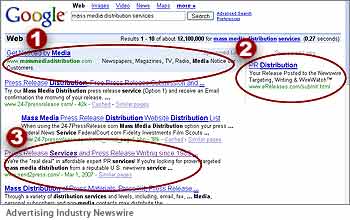
ARE YOU SURROUNDED? Examples of counter branding: 1) buying the top spot in Google AdWords, which appears above the organic listings; 2) secondary bidders against a brand term or trademark; 3) organic placement using SEO methods against a brand name.
Confusing the Consumer for Fun and Profit
I personally find this irritating, not simply from a competitive standpoint, but from a “confusing the customer” perspective. I run into customer service calls all the time from people who don’t understand how to use search engines, what the information being presented to them really means, or where they are being sent when they click links.
I had one person call me last year who complained I was spamming them about my PR and press release services. I replied that we never send spam to anybody, ever, and it’s our corporate policy to never send promotional emails about our company or services. She said I’m seeing your page right here on my screen, and I said where did you get that URL from? And she said your promotional email. I said what company sent you the email, and she rattled off some no-name start-up news spammer claiming to send 10,000 people a press release for $50. Stupidly, they had put a Google AdSense box across the top of the page which was feeding ads from all other press release services firms, one of which was my site. So, since it was at the top of the page (above the logos and navbar for the site), she assumed it was my site and that I had spammed her. She clicked the link from that site in the ad box, which sent her to my site, which is how she got my phone number.
Ironically, she ended up becoming a customer once I showed her that we were a real 24-year old PR and brand identity company and not a dotcom sending out spam to try to sell questionable bulk email services to people wanting to send press releases to the media. And this woman was a veteran PR professional, not a first time Internet user.
With this example in mind, I am worried that easily confused potential customers who type in my company name in Google — perhaps after seeing one of my many interviews in Entrepreneur Magazine, or my inclusion in a new business book for women business owners (Career and Corporate Cool™ by Rachel C. Weingarten, ISBN-10: 0470120347), or similar — and then see a new competitor’s ad in a featured box above my organic listings, might thus cause my customer to be directed elsewhere than to me. While my new competitors want exactly this kind of thing to happen on Google and elsewhere, I do not. (I use the word “competitor” loosely, since I don’t expect them to steal much business after looking at what they do, but you never know.)
Planning for Contextual Counter Branding
When planning any contextual marketing and PPC or PFP program, the issue of counter-branding such as MMD is doing, is something every company should take into account. Much like buying up alternate domain names to protect your brand identity from “typo squatters” it now seems more important than ever to include a budget component for PPC against your own brand and product names to ensure transparency with potential customers as to who is whom.
For search engines this is, of course, a win-win for them in getting more advertising from both sides of the counter-branding arena. So, there is no great incentive for them to change, unless the lawyers get involved.
One easy way to check if your brand or product names are at risk is to log-in to your advertising account with any major search portal and do a bid against your company name or product brand, and see if there are other bidders. Depending on the bid preview, you may have to enter the smallest acceptable bid and see if somebody else would have a higher position. Simply checking the search engine by typing in your brands may not always reveal everything, since all contextual ad accounts allow for budgeting, such as “stop when it reaches $100” so it might be that you have a competitor whose ads only show for the first week out of every month, or only show up on content sites and not the main search engine results.
Using SEO practices to counter-brand can be tricky since litigation can ensue for mis-use of a trademark. For example if MMD started putting my registered trademarks within meta tags of their site pages simply to show up in search results under my brand, they would get an immediate cease and desist from my lawyer.
It seems more important than ever to spend the money and get yourself a trademark attorney (I use a fellow by the name of Matthew J. Booth, www.boothlaw.com) and register any brand you consider viable and which is not simply a dotcom that you’ve thrown up to stick your toe in the water. With some search portals, like Yahoo!, having a registered trademark can be critical to removing potential confusion by way of keyword brand bandits.
And, of course, the best solution is to simply do a better job than your upstart competitors. Strong deliverables, long-term stability, credible management and staff, and proof of performance for any service business will still always put you on top in any marketing program.
Article is Copr. © 2007 by Christopher Simmons – all rights reserved. Story originally appeared on AdvertisingIndustryNewswire.com. All trademarks, service marks, and registered trademarks in this article are the property of the respective mark holders, and are acknowledged.
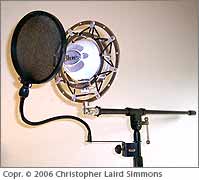 If you’re a Gen-Y, or Gen-Z, you can even print this out and give it to your parents so they have a clue what you’re up to in your bedroom, spending so much time online while wearing a headset mic and brandishing a “Quiet – I’m recording” sign on your bedroom door (an eBook will be available will all the series parts, for easy reading/printing).
If you’re a Gen-Y, or Gen-Z, you can even print this out and give it to your parents so they have a clue what you’re up to in your bedroom, spending so much time online while wearing a headset mic and brandishing a “Quiet – I’m recording” sign on your bedroom door (an eBook will be available will all the series parts, for easy reading/printing).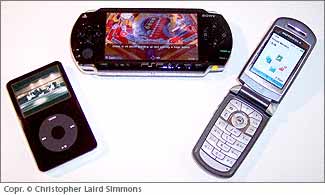
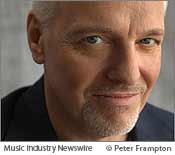 Pete: Well, it was a surreal day in many ways. I’d just flown in from New Zealand the night before. Because Hank had just finished the tour with the Shadows with Brian and Mark, the bass player, and two nights before Hank wanted to… needed to go home and he lives in Australia. So, we should have met somewhere in the middle.
Pete: Well, it was a surreal day in many ways. I’d just flown in from New Zealand the night before. Because Hank had just finished the tour with the Shadows with Brian and Mark, the bass player, and two nights before Hank wanted to… needed to go home and he lives in Australia. So, we should have met somewhere in the middle.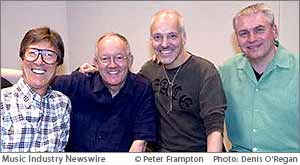
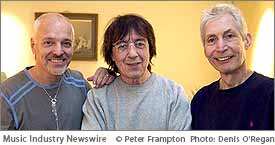
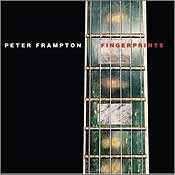 Pete: That wasn’t great, but then he said “Fingerprints” a couple more times afterwards, so that was good. This instrumental record, you know, before you even turn any form of recording equipment on, that you’re potential of sales was diminished in a diminishing business. I didn’t do this expecting to make a lot of money. I did it because I have a passion for the guitar and I haven’t done an instrumental record and I better put my money where my mouth is — finally — and at least make a start. So, I knew that’s what it would be — it is amazing that TV is just not interested — if you know what I’m saying.
Pete: That wasn’t great, but then he said “Fingerprints” a couple more times afterwards, so that was good. This instrumental record, you know, before you even turn any form of recording equipment on, that you’re potential of sales was diminished in a diminishing business. I didn’t do this expecting to make a lot of money. I did it because I have a passion for the guitar and I haven’t done an instrumental record and I better put my money where my mouth is — finally — and at least make a start. So, I knew that’s what it would be — it is amazing that TV is just not interested — if you know what I’m saying.  Pete: We did (PBS) Sound Stage (www.pbs.org/wttw/soundstage/ ) — now that was one of the first gigs that we did of the tour with the new five piece band. That is coming out in February, I think, or late January. (Editor’s note: part one aired Jan. 18, and part two airs Jan. 25, 2007.)
Pete: We did (PBS) Sound Stage (www.pbs.org/wttw/soundstage/ ) — now that was one of the first gigs that we did of the tour with the new five piece band. That is coming out in February, I think, or late January. (Editor’s note: part one aired Jan. 18, and part two airs Jan. 25, 2007.) Pete: It’s all about passion. At least, that’s what I feel. Some days I got it, some days, I don’t. It’s great. I love that part too. Some days I don’t feel like I’m getting anywhere and the reward is two days later, you do something that you dreamed about that you could never do. And, that downtime is always a learning time. It’s always preparation time and I realize if I can’t write or can’t get it right, it’s because I am practicing. The practicing I do will make it sound good tomorrow, but not today. I leaned a lot making this record.
Pete: It’s all about passion. At least, that’s what I feel. Some days I got it, some days, I don’t. It’s great. I love that part too. Some days I don’t feel like I’m getting anywhere and the reward is two days later, you do something that you dreamed about that you could never do. And, that downtime is always a learning time. It’s always preparation time and I realize if I can’t write or can’t get it right, it’s because I am practicing. The practicing I do will make it sound good tomorrow, but not today. I leaned a lot making this record. 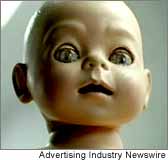 The second TV spot prior to launch, promoting the Cell Processor which is inside the PS3, shows a floating Rubik’s Cube that explodes to fill the room with color. To me this ad smacked too much of the flawed launch spots for the Infiniti Q which featured mood music and somber scenery with nary a view of the actual car.
The second TV spot prior to launch, promoting the Cell Processor which is inside the PS3, shows a floating Rubik’s Cube that explodes to fill the room with color. To me this ad smacked too much of the flawed launch spots for the Infiniti Q which featured mood music and somber scenery with nary a view of the actual car.  Beyond the fact that the movie was a stinker, and a hodgepodge of better movies like Logan’s Run, one of the most annoying things that kept kicking me out of my suspension of disbelief was the raft of illogical and blatant product placements. Apparently clones meant for the slaughter need brand identification of the fact they’re drinking Aquafina water, or wearing Puma athletic shoes.
Beyond the fact that the movie was a stinker, and a hodgepodge of better movies like Logan’s Run, one of the most annoying things that kept kicking me out of my suspension of disbelief was the raft of illogical and blatant product placements. Apparently clones meant for the slaughter need brand identification of the fact they’re drinking Aquafina water, or wearing Puma athletic shoes.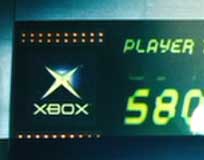 When the lead characters use a callbox in the city, and the “MSN” logo comes up to float in mid-air, it’s not unreasonable to assume that might happen. Although, the likelihood of most of the movie’s near-future tack-ons are illogical at best (we will not have floating holograms, flying hover bikes, or sky-high monorails within the next 15 years by any stretch of the imagination). I’m also a bit doubtful that MSN will be the default search tool for phone directories at public phones (ahem, if there are still public phones on street corners at all in 15 years); but “wishful thinking” product placement in a bad SF movie isn’t that heinous, compared to the rest of the package.
When the lead characters use a callbox in the city, and the “MSN” logo comes up to float in mid-air, it’s not unreasonable to assume that might happen. Although, the likelihood of most of the movie’s near-future tack-ons are illogical at best (we will not have floating holograms, flying hover bikes, or sky-high monorails within the next 15 years by any stretch of the imagination). I’m also a bit doubtful that MSN will be the default search tool for phone directories at public phones (ahem, if there are still public phones on street corners at all in 15 years); but “wishful thinking” product placement in a bad SF movie isn’t that heinous, compared to the rest of the package. Another gratuitous placement in a bad movie was the giant weight loss product truck that just happens to be driving through the back roads in Terminator 3 (photo at right). We’ve long seen Pepsi or Coke trucks get side-swiped in TV shows and movies, but now we’re getting long lingering camera shots of trucks with brands highly visible on the sides.
Another gratuitous placement in a bad movie was the giant weight loss product truck that just happens to be driving through the back roads in Terminator 3 (photo at right). We’ve long seen Pepsi or Coke trucks get side-swiped in TV shows and movies, but now we’re getting long lingering camera shots of trucks with brands highly visible on the sides.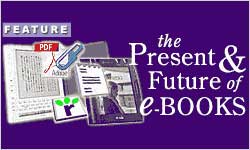 Arguably the widest “distribution” of e-books is actually facilitated through unauthorized conversion of printed books into electronic format using OCR (optical character recognition) software and a scanner, or Adobe Acrobat’s “capture” feature. Thousands of books are now being circulated without any compensation to the author or publishers, which is evidence of legitimate concern for the need of digital rights management (DRM) technologies before major publishers make e-books a staple of their marketing. And, ironically, as the market continues to present itself, some online book sellers have stopped selling e-books in favor of only offering print-on-demand (POD) versions of small press titles.
Arguably the widest “distribution” of e-books is actually facilitated through unauthorized conversion of printed books into electronic format using OCR (optical character recognition) software and a scanner, or Adobe Acrobat’s “capture” feature. Thousands of books are now being circulated without any compensation to the author or publishers, which is evidence of legitimate concern for the need of digital rights management (DRM) technologies before major publishers make e-books a staple of their marketing. And, ironically, as the market continues to present itself, some online book sellers have stopped selling e-books in favor of only offering print-on-demand (POD) versions of small press titles.